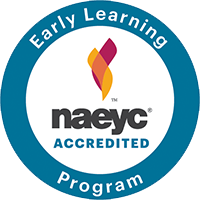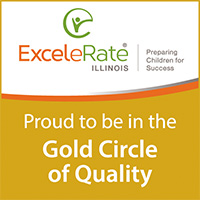- Child Development and Family Center
- Resources
- Articles
- The Importance of Music and Movement
The Importance of Music and Movement
By April Kaiser (CDFC Teacher)
Children naturally love music! Whether it’s soft and soothing or a lively tune, children feel it both physically and emotionally.
Throughout the early years, children are learning to do new things with their bodies. Young children are also learning that movement can communicate messages and represent actions. Young children are able to perform and recognize pantomimed actions such as ironing, stirring, swimming or playing the piano.
Most children usually are quite at home with movement. They begin to learn about the world by acting on objects and people, and they “think with their bodies” well before they think with words. This is why body movement is not only fun for children but also a good opportunity for them to solve problems. When you ask questions that call for verbal responses (“Can you think of some other ways that Pooh could get up to the honey tree?” or “What did we do to make applesauce yesterday?”), some children may have difficulty responding in words. But when questions call for movement (“What are some ways you can think of to get from one side of the mat to the other?”), children aren’t limited by their verbal abilities. Movement problems challenge children in different ways and help teachers/parents learn about the problem solving and creative abilities of less verbal children.
Singing or chanting can help make routine activities and transitions, such as gathering children into a circle or group activity, smoother and more enjoyable. And, music helps to set a mood. Quiet, soothing music calms and relaxes children, while a lively marching tune rouses them for energetic clean‐up time. Music and movement are also social activities that help children feel part of the group.
As children grow in their appreciation of the beauty of music and dance, they acquire a gift that will bring them great pleasure. Music brings another dimension of beauty into our lives. Music and movement benefit a child’s development in many ways. Here are skills that music and movement can help develop:
- Participating in a group
- Social skills
- Express emotions
- Enhance self‐concept by sharing music and dance of each other’s culture
- Refine listening skills‐noticing changes in tempo or pitch
- Awareness of movement and body positions
- Creativity and imagination
- Learn new words and concepts
- Explore cause and effect
- Develop large motor skills
- Improve balance, coordination and rhythm through dance and movement activities
- Improve small motor skills‐learning finger plays and playing musical instruments
Source: The Creative Curriculum for Preschool Children by Diane Trister Dodge and Laura J. Colker
-
Resources for Parents
- Parent Handbook (PDF)
-
Parenting Articles
- The Art Process
- The Importance of Music and Movement
- Helping Children Become Good Readers
- Raising Infants and Toddlers Into People You Like to Be With
- The Importance of Self-esteem
- Alternatives to Spanking
- The Four Stages of Toilet Learning
- All About Potty Training
- Establishing a New Routine
- The Not So Terrible Twos
- Building a Routine and Sticking With It
- Developmentally Appropriate Practice: How Can We Recognize It in an Early Childhood Setting?
Contact Us
Child Development and Family Center
Campus Child Care Center Building
DeKalb, IL 60115
815-753-0125
815-753-8502 (fax)
jboyer@niu.edu
Hours of Operation
Monday-Friday
7:30 a.m.-5:30 p.m.
Child Development and Family Center Annex
The annex is currently closed.

